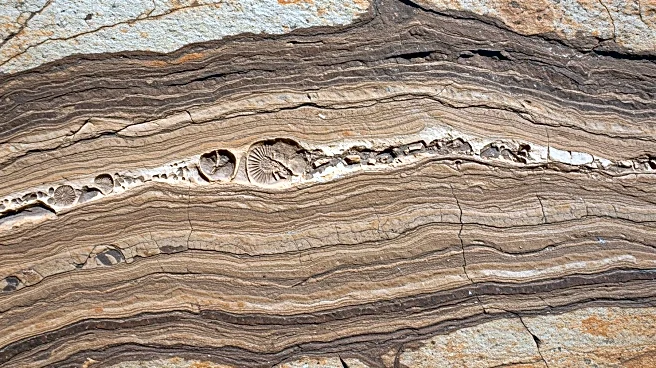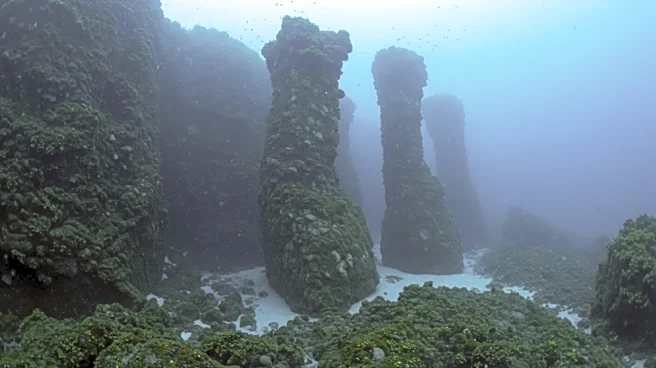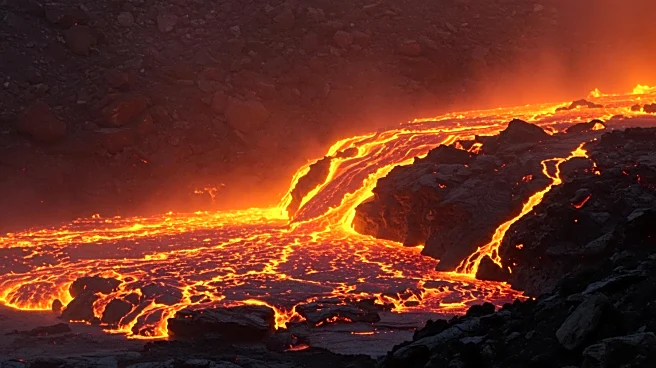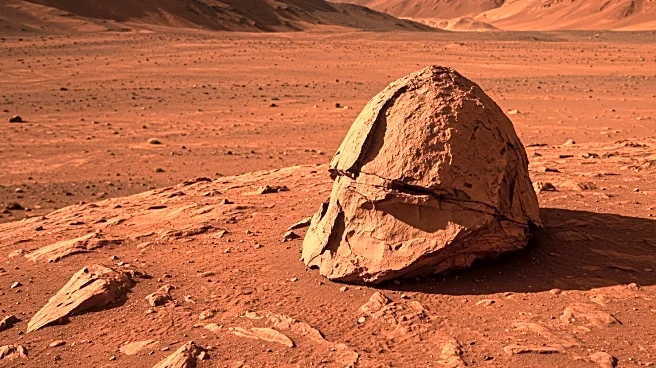What's Happening?
A team of scientists led by geochemist Dr. Nigel Blamey has successfully extracted and analyzed ancient air trapped inside halite, a mineral form of rock salt, dating back 815 million years. This study, published in Geology, provides direct insights into Earth's atmospheric conditions during the Neoproterozoic era. The researchers developed a method to measure gases sealed within microscopic bubbles in the halite, revealing that oxygen levels were approximately half of today's levels. This discovery challenges previous assumptions about the composition of air during this pivotal era and suggests that Earth's atmosphere could have supported complex life forms earlier than previously believed.
Why It's Important?
The findings have significant implications for understanding the evolution of life on Earth. The higher-than-expected oxygen levels suggest that the planet's atmosphere was capable of supporting animal life much earlier than traditional models indicated. This could reshape scientific theories about the timeline of life's development and the conditions necessary for its emergence. The study also highlights the importance of direct measurement techniques in atmospheric science, offering a more accurate picture of Earth's ancient environments. The research may prompt further investigations into other geological samples, potentially uncovering new insights into Earth's history and the factors that influenced the evolution of life.
Beyond the Headlines
The study has sparked scientific debate, with some experts questioning the interpretation of the data. A separate analysis suggested lower oxygen levels, highlighting the complexity of studying ancient atmospheric systems. The researchers acknowledge these challenges and are refining their methods to ensure the accuracy of future analyses. The discovery also underscores the potential for geological samples to provide direct evidence of Earth's past, offering a valuable complement to indirect modeling techniques. As extraction and analysis methods improve, scientists may gain a deeper understanding of Earth's atmospheric history, extending beyond the limits of current ice core data.











